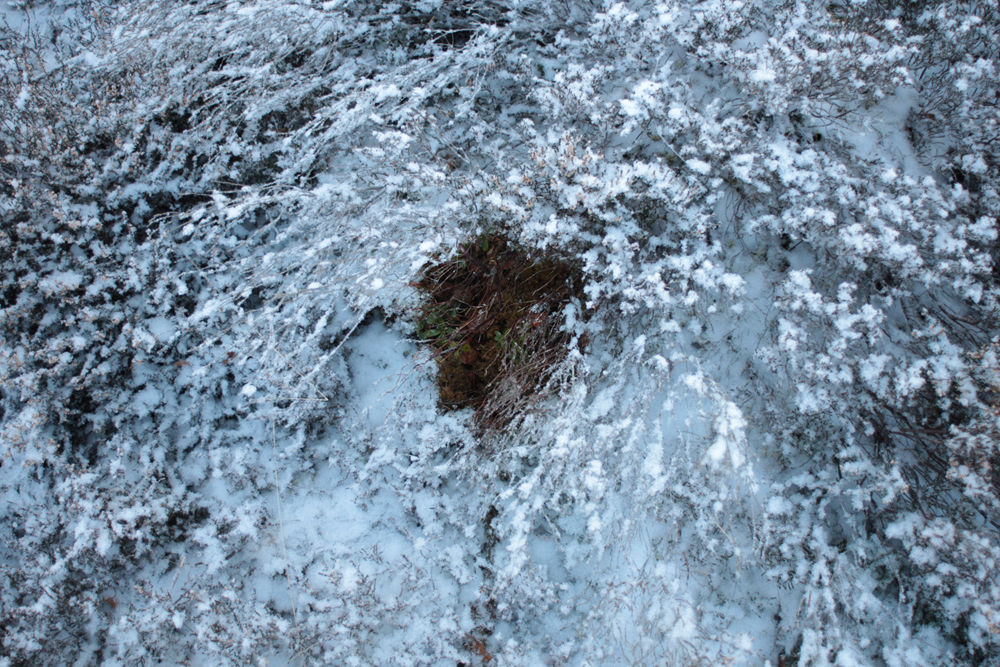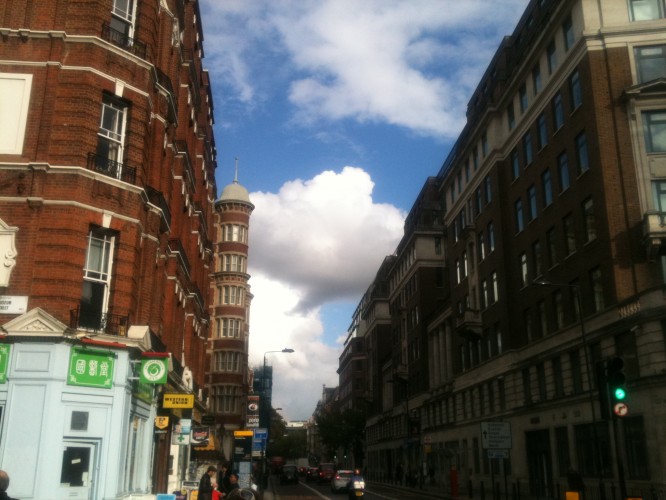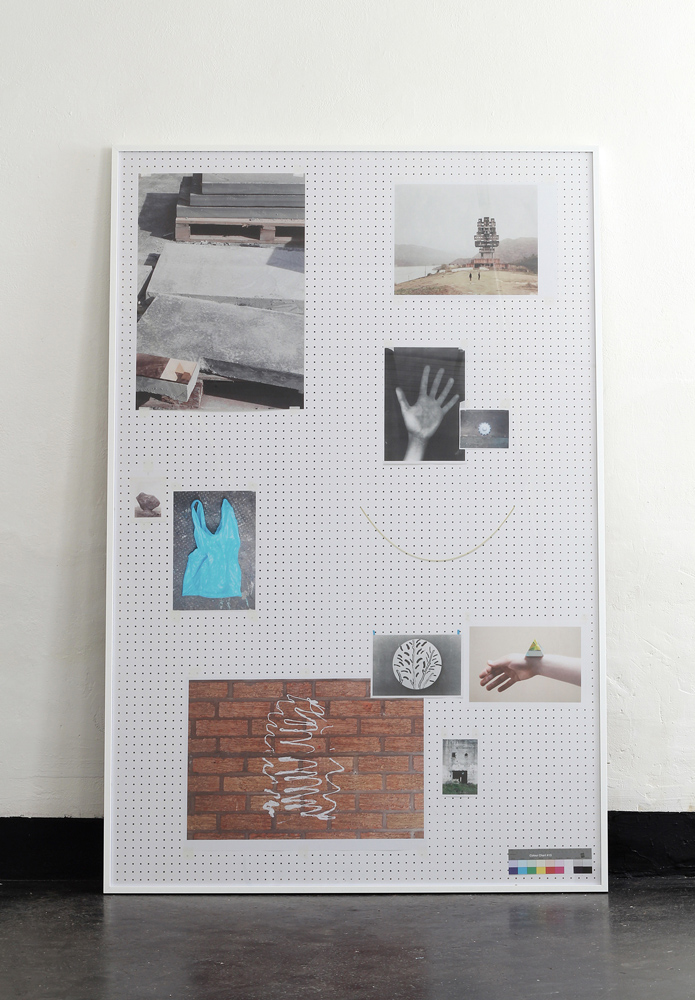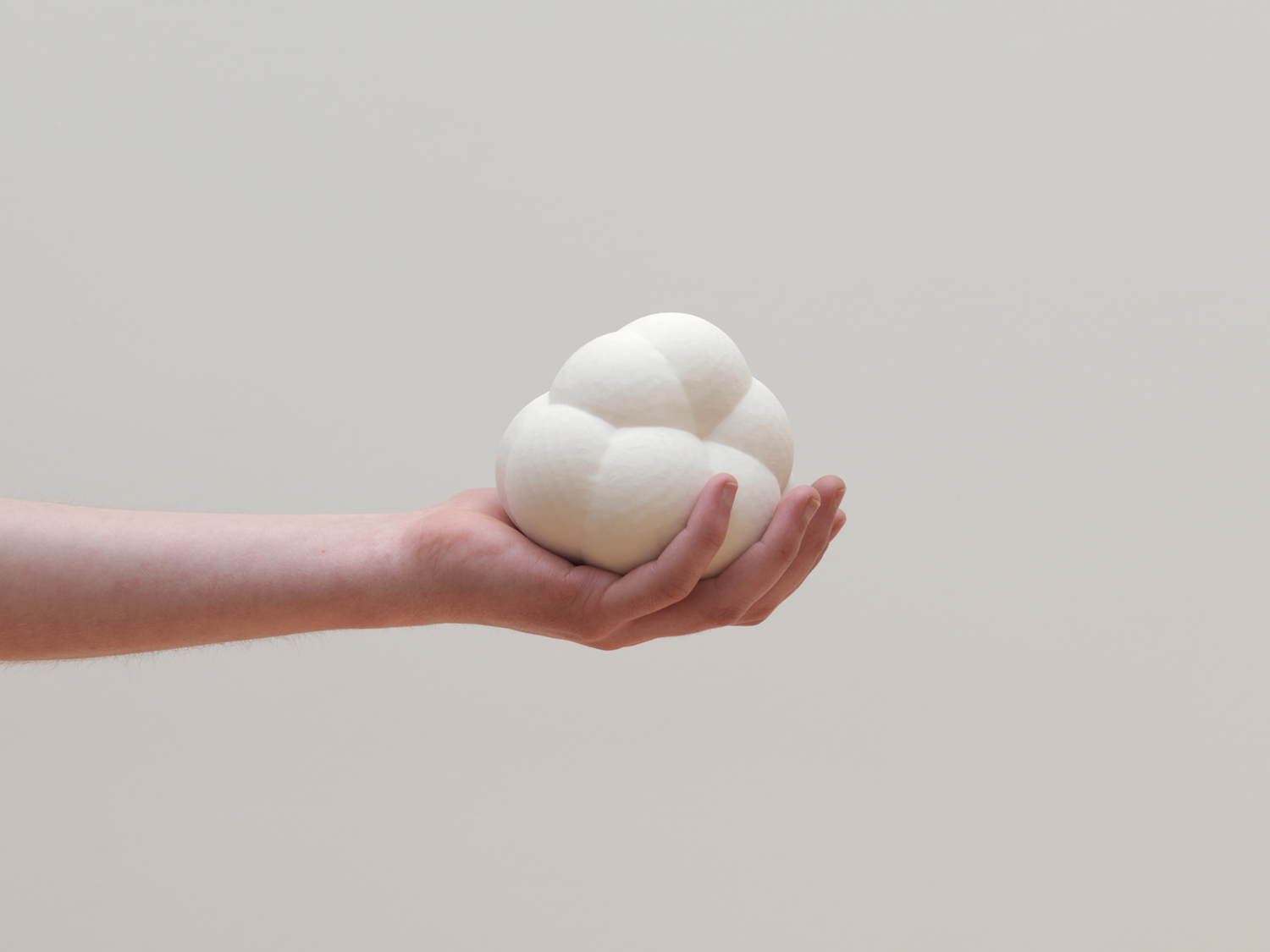Tom Nolan
Interview by David McLeavy
Published March 2014
-
Tom Nolan’s practice spans making, writing and curation with a particular interest in collaboration. Whilst co directing Rhubaba Gallery and Studios in Edinburgh he has also exhibited solo work along with collaborations with fellow Rhubaba studio holder Catherine Payton.
-
Prior to this interview, I was looking through the Internet and I came across an interview with yourself in which you were asked ‘What sustains your practice?’ Your quite intriguing answer was ‘Chance’. What do you mean by that?
I guess I was just trying to get at a few different things with one word - it's not that it's the only thing that sustains my practice, but also that the myriad factors that provide sustenance are all subject to, and enriched by, chance.
An audience - I'm not really one of those people that is necessarily chipping away all the time making things - I tend to realise things when I have the chance to show them to others. This isn't because I'm not interested in the making things per se, but because I'm more interested in the way that others approach the work, animate it, once it's out there, assembled - I guess this is the social aspect of making. So there's a sustenance here from the chance encounter - of people with works, works with works, works with space and context. The space to hold conversations through the work and the availability of these conversations and audiences are really up to chance too (someone picks up on a particular answer in an interview you did 3 years ago, for example).
There are other things in that word too - like the idea that putting the work out is about experiencing chance and a certain degree of risk: I don't want to tie things up too tightly, I want to leave them up to chance to some degree to see what happens to them when they're not around me anymore (safe in the studio). I'm struggling to make that last sentence make any sense, but there is definitely something in the idea of not really understanding what things are or why they are and the role of chance in defining some of those things.

Cloud, 3D Prototype print from found digital file, 2012
You mentioned the importance of the encounter and the re-staging of the work outside of the studio and I am interested to know how you view art production. Are you of the opinion that being an artist is a constant activity that influences everything you do or do you believe it to be a more focused action that happens at specific times, in the studio for example?
I guess I try not to think of my practice as 'art production' - not because Im avoiding the art bit or the idea of material production, I just find it unhelpful to think "right, now I'm producing art...".
There isn't an 'either/or' here. I think there's an effect on a relationship to everyday life that comes through a way of thinking, developed through practice - so this is a way in which being art is a lived experience for me. I also think that another aspect of practice (or 'art
production' if we call it that) is the encounter/the removal of the work from the studio - this is can be roughly thought of in terms of the more social aspect of practice for me.
Obviously this is a rough division. I try not to think too rigidly in terms like "this is my art, this isn't my art" - obviously I do put things forward, make them public etc, but it's more trying to use a slightly different language for filtering, i.e. "is this interesting... is it doing something?" I'm keen to try to use that sort of language around all encounters with things - "is this interesting?" rather than "do I like this as an artwork?". I'm going a bit off from your question but I'm trying to get across that I guess these sort of partitioning of art away from lived experience is really a linguistic one - I'm always struck by how many informed, intelligent people I know will say thing like "I liked it... but not as art" - I just don't get that.
So are you saying that the separation is perhaps a semantic one?
To a degree yeah - there is a linguistic aspect to it.

Spring, C-Type print, 2013
I would find it difficult to sum up your practice to someone, how do you feel about that? Do you think its a positive or negative thing to have a packageable artistic practice?
I would too! I do worry about that sometimes - there are definite upshots. I certainly don’t present a very attractive or confusion-free option for people programming spaces! I know the experience of that from the other side, and I know it feels a bit weird asking someone to come and do something when you don’t know what they’ll do or the substance of what you're basing the invitation on. But it does frustrate me somewhat to be honest - not exclusively this question of programming, but the overall culture of very packageable (as you put it) practices. I don’t think that having a practice that can be more readily summed up is necessarily a positive or negative thing - the question is, do you limit yourself to one way of working in order to package or brand yourself, or is that neatness a by-product or accident of your genuine interest? If you start out to create a brand for yourself I’m not interested. For me, it wouldn’t be an honest thing to do, to select right down and say “I make work about X using Y and Z as materials.” I’d just get bored after 5 minutes. That doesn’t mean I’m not consistently interested in certain things, or that those interests don’t permeate all the things I do - I just don’t want to fix the methods I use to approach those ideas, or the angles I look at them from. I always want to be able to respond, and taking a firm position makes that more difficult.
I read a book by Richard Sennet called Together recently, and he was talking about the difference between dialectical and dialogical conversation. My understanding is this - the dialectic has a goal in sight, a truth reached through the rational merging of point (thesis) and counterpoint (antithesis) to reach a compromise (synthesis). In opposition to this the dialogic conversation is endless - it’s not seeking only to correct or extend previous points (or works) but also continually informs and is informed by previous points. When I read that I really recognised an excitement in the idea of the dialogic - I often revisit, revise, rename works, for example I might go back through old photos and realise I want to talk about something now that was then a holiday snap. And this is also there in my interest in organising, collaborating - in trying to view things with an equal weighting. It’s maybe a bold claim to liken my work to philosophy in this way, but I do think that this aversion to the ‘either/or’ and attraction to it’s opposite - ‘both/and’ - seems like a parallel to this disinterest in the dialectical.
To come right back to the question, as I was saying to you when you were explaining about the reasoning for this YAC project, I do worry that the predominant mechanisms of viewing artwork so distantly and quickly, and the accompanying reliance on websites and application forms (’sum up your practice in 6-8 images and 300 words’) does mean that complexities get somewhat ironed out: installations and events which so strongly preference experience become bland images, sculptures have a front and a back. There are exciting flipsides to that too, but I do worry that there is an answer to your question in light of all of these factors which is ‘yes, it’s a positive thing to have a packageable art practice’.

Speech Bubble, C-Type Print, 2011
You also co run Rhubaba Gallery and Studios in Edinbugh. Do you view Rhubaba’s programme as an extension of your practice?
Yeah definitely, there are some times when it feels more like administration than anything else, but the same goes for anyone’s practice I think, it’s just a necessary part of getting something to happen. We think a lot about the structures (and infrastructures) of what we do at Rhubaba - and, personally, I certainly think of that as an important part of my practice. I really enjoy thinking about it in terms of architecture as well, developing open structures which have a sort of co-authorship to them, whilst remaining really open to those that enter them, as artists, audiences, whatever. And I really enjoy the structure of Rhubaba itself - I get to work with really exciting artists on the committee as well as people visiting and in the studios.
Some of the difficulty with this is again linguistic - there’s a language and a culture around artist-led activity which is often quite hard to navigate if you want to think of what you do as your work. There’s sometimes a worry about exercising too much of a voice over other people’s work for example, but I’m really interested in this interplay - how our voices can maybe engage with or question someone’s work in a serious and constructive way rather than just giving over a space.

I’m not explaining myself very well, C-Type print in frame, collaboration with Fran Stacey, 2012
If I can refer to a specific work you produced in 2012 called Cloud. Am I right in thinking you 3 dimensionally printed a structure from a found digital file? Could you talk a little more about this work in relation to the rest of your practice?
Yes, it was a 3D print from a file freely accessible from Google Sketchup Warehouse - an online repository of models intended for use in their Sketchup programme. People put up renderings of existing buildings, furniture etc, but also their own designs like really odd sculptures, their own designs for buildings and so on.
I was really interested in the cartoonish quality of these things - the way these, in reality, nuanced structures, spaces, objects, become these such crude '3-D' objects, which are already anachronistic. I thought the clouds on there were a really interesting example of this - these strange abstract blobs with their own qualities. I really got into the idea that I could order one online and get this very heavy, very material (and fairly fragile) thing - a version of a version that the person who rendered it almost certainly never intended to exist in the world - I liked that paradox between a thing conceived as a 3-dimensional render (limited to 2-dimensions) and the material rendering of that as a dusty, awkward object.
This idea of the cartoon, the overly simplified made complicated and also this idea of the cognitive aspect of perceiving depth, trompe l'oeil (especially within cartoons) like when someone draws a door on a wall and uses it or roadrunner escapes through a drawn-on
tunnel are all consistently interests for me.
The way we think and understand, and the way we look and see, are really at the core of my interest. For me that's in that cloud to some degree - it's quite an odd experience to hold something that's been produced in that way.
Also, clouds are a kind of cliche of looking and seeing, and subsequently of subjectivity - the idea of reading significance and perceiving order in the random is another aspect of this interest I have in cognition so I enjoy that link.
You previously mentioned that a lot of your time, inevitably, is taken up with admin and I am interested to know how you use your studio?
I try to use my studio regularly, I like being in there. I found it quite difficult for some time after finishing my BA to find a good use for a studio - I would get a bit of time here and there and find that I wasn't getting anywhere with it because I was spending my time in there thinking 'I need to make something in the next 2 hours' and if not I felt I'd wasted precious time. I think this was to do with having enjoyed so much time and space for 3 years and suddenly finding those things in short supply.
But I feel like I have a much better idea of where a studio sits for me now. I try not to worry too much about how productive I'm being because I trust that being in a space and moving things around is often the best I can do.
I'm also trying to use the fact of being in a communal environment like Rhubaba to make work. I made a couple of shows with Fran Stacey and one work I'm still really interested in that we made together was called 'I'm not explaining this very well'. We had a board in the studio we were then sharing, and we'd leave things like images or objects up on it for each other as a sort of visual conversation. Then at some point it was photographed and reproduced as a photograph (a sort of life size facsimile). I liked the fact of fixing photographically rather than physically, leaving it open to change, and I also liked the visualising of this conversation in a way that was both open and opaque. This is an example of setting up a structure for dialogical conversations - one of us could take something down, the other could put it back, add a note or a new image or object. I've recently set up another of these boards in my studio and opened an invitation to anyone else in studios to disrupt or contribute to it, with photographic replicas made sporadically. So I guess that's a way I'm thinking of the function of my studio as a social rather than private space.
How comfortable are you with the terms Artist and Curator? I know that a lot of people who have varied practices find it difficult to define what they ‘do’ and I wondered if you thought what you do at Rhubaba was curatorial and what you do as Tom Nolan is artistic practice?
It doesn't really bother me to be honest.
Have you ever been disappointed by a comment or a ‘reading’ of your work by an audience member?
I can't really say I have - I think the way more disappointing this isn't a unwanted reading of something - it's no reading at all. If it can just be passed by, doesn't invite people, that's disappointing for me. Actually, the only that's got to me before is saying it's derivative. That's pretty bad.

Cloud (in hand), 3D Prototype print from found digital file, 2012
So what's next for you?
Well we're programming at Rhubaba for the next year, and personally I'm developing to work on a couple different film projects - trying to compress the spatial arrangements of objects and narratives in the gallery into the 'space' of the image/frame. Also this is a way to try to bring in my writing practice too - working on the voices of narrators for example.
-
Tom Nolan (b.1987) is an artist based in Edinburgh. Recent projects include: Tourists in Residence, a commission by Edinburgh Art Festival 2013, with Catherine Payton; various talks and publications delivered under the umbrella title Edinburgh Psycho-Geography Association, also with Catherine Payton, and the Art Lending Library, as part of the Glasgow International Festival. Recent exhibitions include RAUM UND/ODER ORT, Gallery Basement, Vienna; Subject to Alignment, Rhubaba Gallery, Edinburgh; Summer Fayre, Outpost Gallery, Norwich; Blockbuster, Central Reservation, Bristol and New Contemporaries, Royal Scottish Academy, Edinburgh. He was awarded a graduate teaching post at Edinburgh College of Art in 2010/11 and is currently on the committee of Rhubaba Gallery and Studios in Edinburgh.
If you like this why not read out interview with Luke Nairn
-
© 2013 - 2018 YAC | Young Artists in Conversation ALL RIGHTS RESERVED